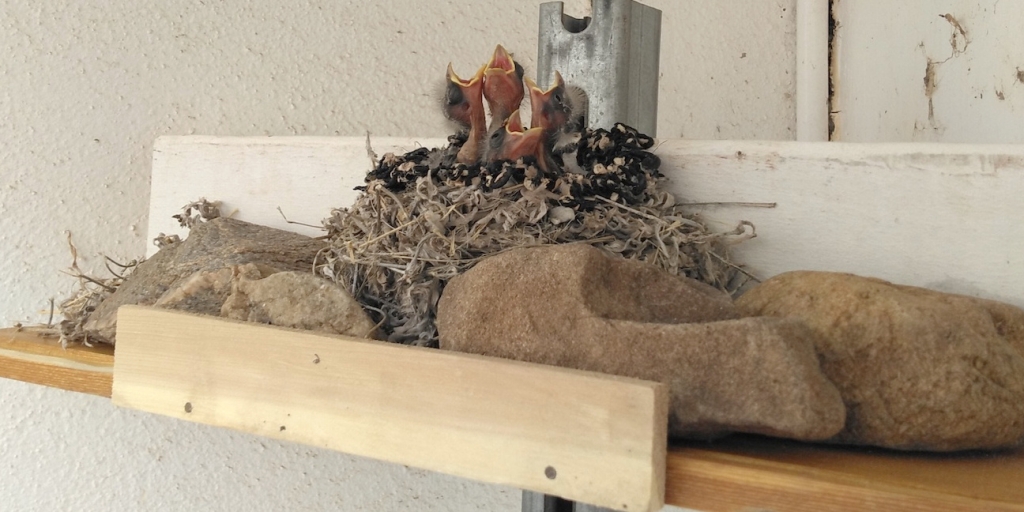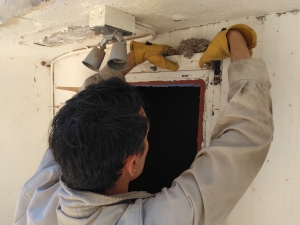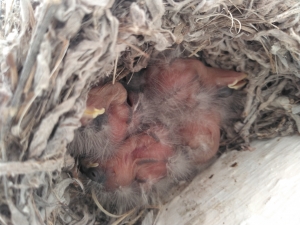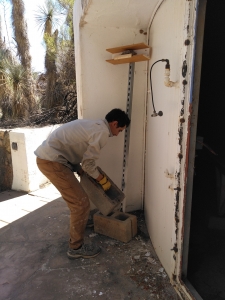
As with all construction projects, there are unknown hurdles and roadblocks, physical and logistical challenges that slow forward progress. How we deal with each of these defines the integrity of the project, in some ways more than any other factor.
Trent was preparing to rebuild the lower lung door when he discovered a bird nest on the high, narrow ledge of the old steel door frame. In the nest were four recently hatched chicks, their mother distraught by our disruption of her feeding. The grinding, sanding, and welding over the subsequent days would surely cause further disruption to their health and maturation at this critical stage.
I called my childhood mentor and good friend Ron Spomer, avid outdoorsman, wildlife photographer, and conservationist. He quickly dispelled the myth that touching a bird nest or even the baby birds themselves would cause the mother to abandon them. ‘Birds really can’t smell very well. It’s just not their most keen sense,’ he claimed.
Ron then proceeded to explain how to move the nest, in one or a few stages:
- Build a new platform of similar height and protection from the elements.
- Carefully move the nest 8-10 feet, and no more such that when the mother returns she can hear the chicks and find them readily.
- If needed, wait a day or three for the mother to adjust to the new location, then you can move the nest again.
I ran over to the B2 wood shop and was pleased to receive Tim’s immediate assistance. He and I built a nesting platform in the course of a few minutes, using scraps of wood. I returned. Trent and I mounted the sturdy “C” shaped box on an old piece of unistrut. We moved the nest, and then photographed it for Ron’s review. He quickly noted that the top board was too close to the lip of the nest, disabling the mother from walking around the edge to feed her young. Argh! Of course. Trent and I lowered the box and nest and removed the top board. We were pushing into the second hour since the chicks were fed. Ron said it was unlikely they would survive, given their need for constant nourishment.
We replaced the nest on the unistrut, and just before dusk headed up to our apartment on campus.
For the next two days, we didn’t see the mother and assumed the worst.
But when Trent reached over the nest and photographed what we could not see, sure enough, all four chicks were living, each with a thicker down than before. Trent discovered that if he held his gloved finger above the nest and did his best to approximate a bird call, the chicks rose above the rim, necks strained, ready to receive.
Birds on Mars? No, neither living nor in skeletal form. But as we move from this planet to another, it is my hope that we slow down a bit, taking time to remember where we came from, and what we value most as we leave rover tracks, boot prints, and bulldozer cuts to build the first habitats on Mars. –Kai Staats




